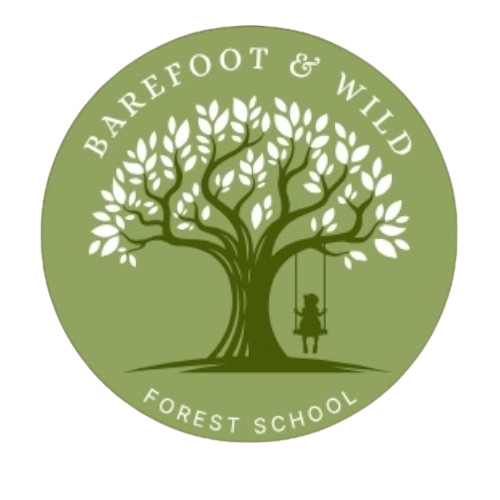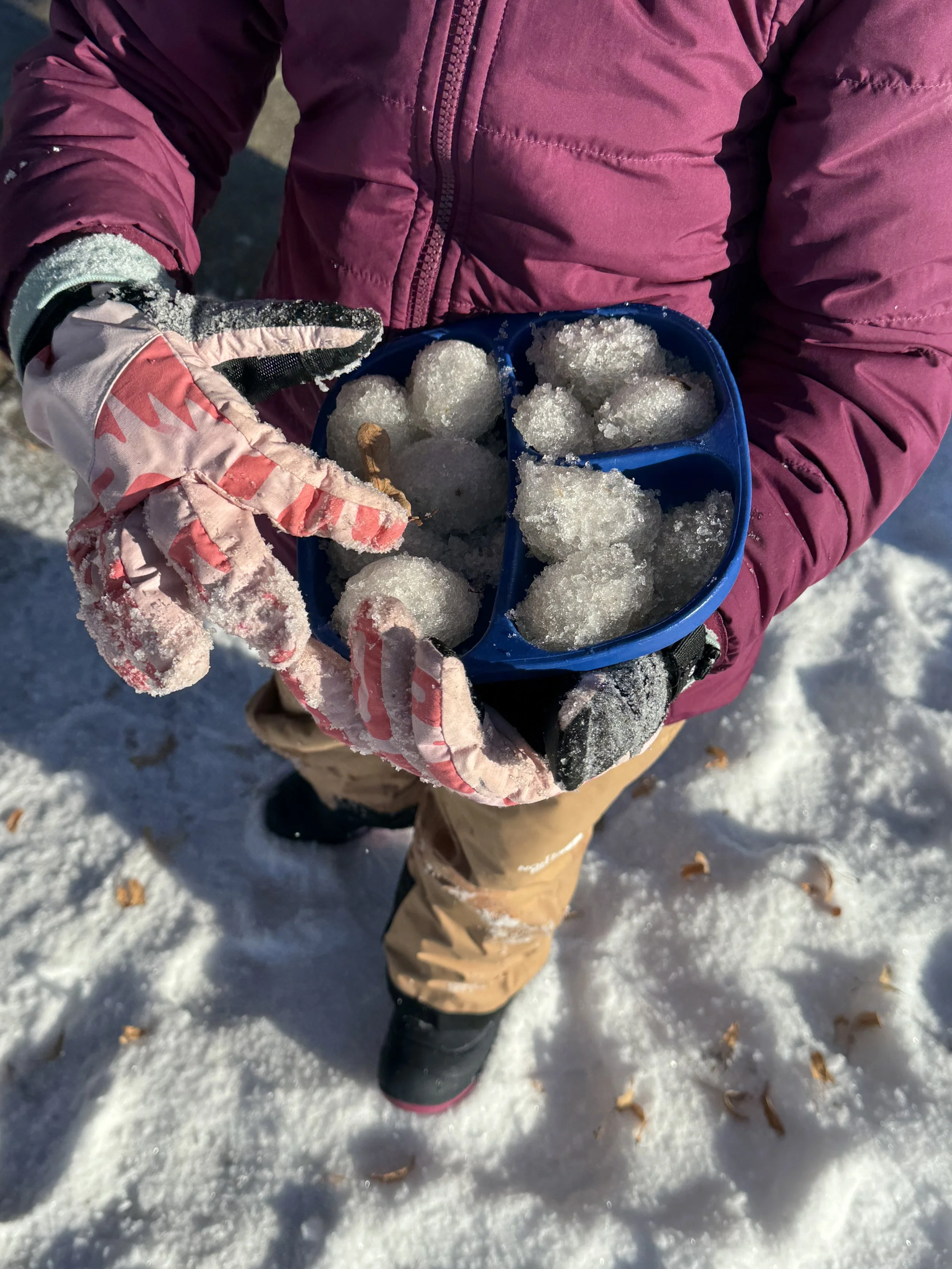Clothing & Gear Guide
At Barefoot & Wild Forest School, we don’t believe in bad weather—only bad clothing for the weather. Rain, shine, or snow, class is always in session. Here’s our guide for how to dress for success!
☀️ Warm Weather at Forest School
1. Lightweight, Breathable Layers
• Choose lightweight cotton or moisture-wicking fabrics (like merino or performance wear) to help keep them cool and dry.
• Avoid thick or synthetic clothing that traps heat.
2. Long Sleeves & Pants (Yes, Even in Summer!)
• Loose-fitting long sleeves and pants protect from:
• Sunburn ☀️
• Scratches from branches 🌿
• Bug bites 🦟
• Look for breathable, UV-protective outdoor gear.
3. Sun Hat
• A wide-brimmed hat or cap shields the face, neck, and ears from sun exposure.
• Bucket hats with neck flaps are a great choice.
4. Sturdy, Closed-Toe Shoes
• Stick with closed-toe hiking sandals or lightweight trail shoes that protect feet and allow airflow.
• Avoid flip-flops or crocs unless water play is planned.
5. Sunscreen & Bug Spray
• Apply broad-spectrum SPF 30+ before heading out.
• Use child-safe insect repellent if bugs are active.
🍂 Forest School in the Fall
1. Base Layer (Against the Skin)
• Choose moisture-wicking long underwear (synthetic or merino wool).
• Avoid cotton — it holds moisture and chills the body if wet.
2. Middle Layer (Insulating)
• A fleece pullover, sweatshirt, or wool sweater works great.
• This layer traps heat but should still allow movement.
3. Outer Layer (Weather Protection)
• A waterproof, windproof jacket with a hood is a must.
• Add rain pants to keep legs dry when sitting or kneeling on wet ground.
4. Pants
• Use insulated pants or waterproof layers over leggings or thermals.
• Choose durable fabrics that can handle rough play and mud.
5. Footwear
• Waterproof boots (like Bogs or rubber boots with warm liners) are ideal.
• Wool or moisture-wicking socks keep feet warm.
6. Hat & Gloves
• A warm beanie or fleece hat for chilly mornings.
• Water-resistant gloves or mittens for cold or damp days (consider backup pairs).
7. Extra Gear
• Extra socks and gloves in a dry bag.
• Optional: Neck gaiter or scarf for wind protection.
❄️ Forest School in Winter
1. Layering is Essential (3 Layers Rule)
• Base Layer (Wicking):
• Thermal underwear (top and bottom) made of merino wool or synthetic material.
• Avoid cotton — it absorbs moisture and cools the body.
• Middle Layer (Insulating):
• Fleece, wool, or down sweater/jacket and pants.
• Keeps body heat in without bulk.
• Outer Layer (Protective):
• A waterproof, windproof shell jacket and pants (or insulated snowsuit) to block snow, rain, and wind.
⸻
🧤 Winter Accessories (Don’t Skip These!)
• Hat: Insulated beanie that covers ears (or a balaclava for full face protection).
• Gloves/Mittens:
• Waterproof insulated mittens are best — they keep hands warmer than gloves.
• Bring extra pairs — wet hands = cold kids.
• Neck Warmer or Gaiter: Scarves can snag — fleece gaiters are safer and easier.
⸻
🥾 Footwear
• Insulated, waterproof boots (like Bogs, Sorels, or snow boots).
• Wool or thermal socks — bring extras in a dry bag.
• Avoid doubling up socks unless boots allow — it can restrict circulation and make feet colder.
PRO TIP: Kids are often happier outdoors in winter than we expect, as long as they’re dry, layered, and free to move.
How Kids Should Dress for Rain
*Rainy days at Forest School are some of the most magical — full of puddles, worms, and wonder!
1. Base Layer (Against the Skin)
• Moisture-wicking materials like merino wool or synthetic fabrics.
• Avoid cotton — it holds moisture and makes kids cold.
2. Insulating Layer (Optional, Depending on Temperature)
• On chilly days, add a fleece or wool sweater to keep them warm under rain gear.
• If it’s warm and wet, you may skip this layer.
3. Rain Gear (Essential Outer Layer)
• Waterproof Rain Jacket with a Hood
• Must be fully waterproof (not just water-resistant) and breathable if possible.
• Waterproof Rain Pants
• Full-length with elastic ankles and adjustable waist. Bib-style or dungaree-style pants work great for keeping the torso dry during puddle play and sitting in wet grass.
• One-piece rain suits are also great for younger children!
4. Waterproof Footwear
• Rubber boots (wellies) are best — tall enough to handle puddles and mud.
• Insulated rain boots or wool socks can help on cooler days.
• Avoid fabric or mesh sneakers — they soak quickly and don’t dry well.
5. Accessories
• Waterproof mittens or gloves (for colder rainy days).
• Wool or synthetic socks — bring an extra pair just in case.
• Hat: A warm beanie under the hood on cold days, or a brimmed rain hat for warmer rain.

